Scissor Lift
Investigate how the function of a scissor lift is influenced by weight and height.
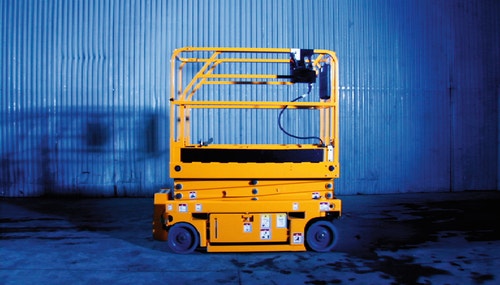
Connect
(5-10 Minutes)
Scissor lifts are designed for easy and safe access to elevated positions and are often used where ladders are not an option. A scissor lift’s work platform provides space for tools and movement, and can lift a heavy load.
Build the Scissor Lift and investigate how its function is influenced by weight and height. Let’s find out!
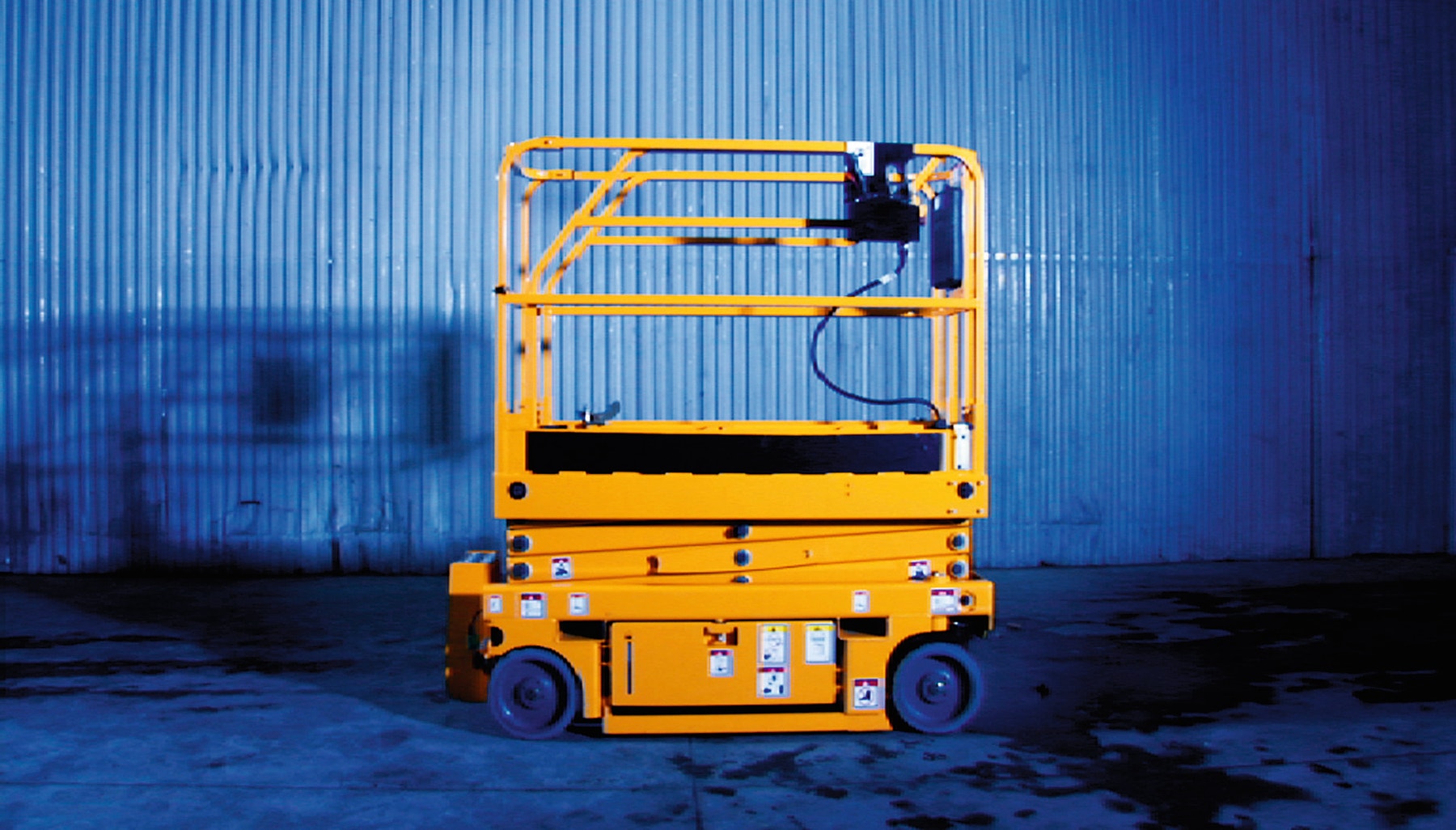
Construct
(20-25 Minutes)
Build the Scissor Lift
(All of book 1A and book 1B to page 11, step 15).
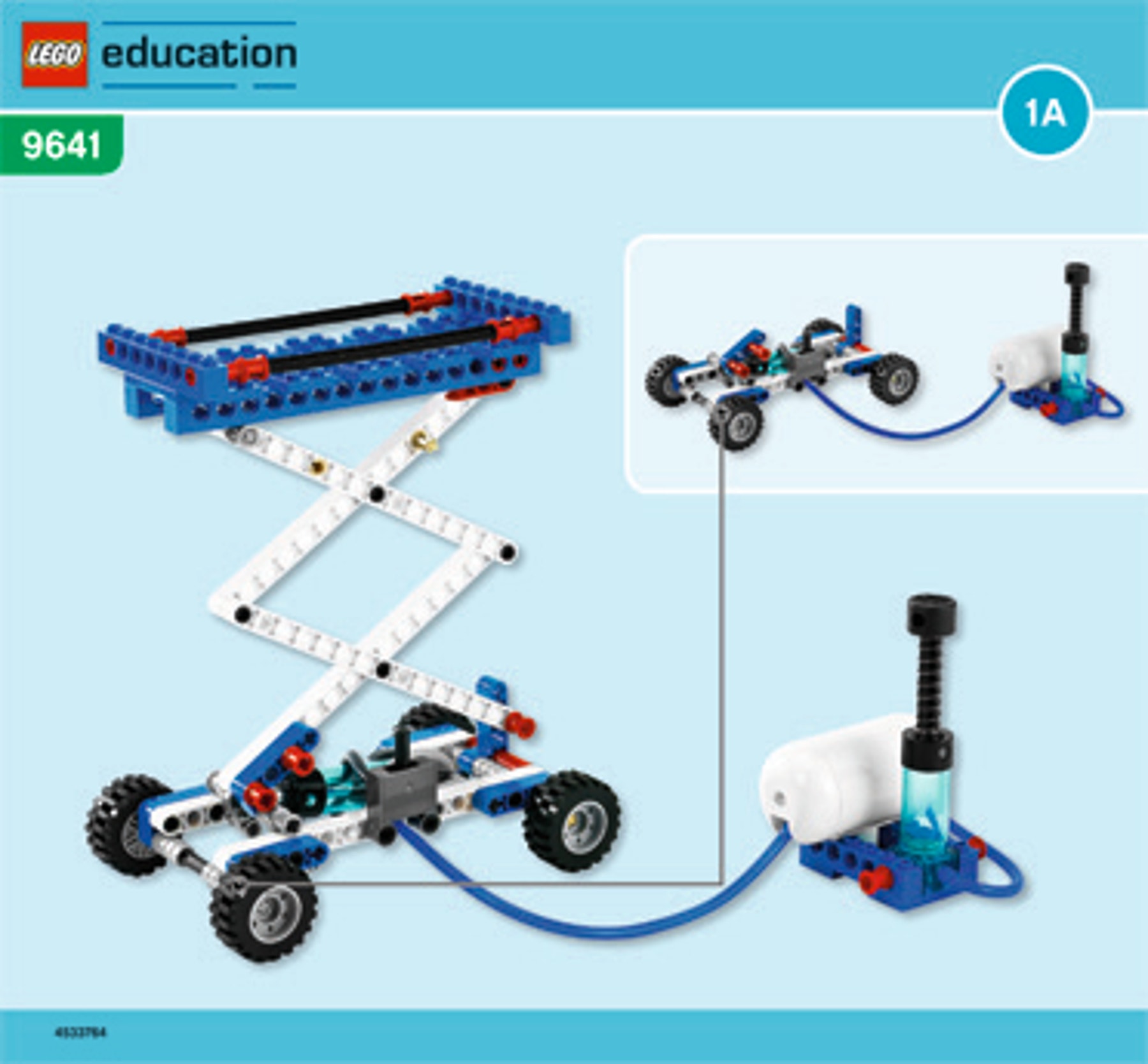
Pump air into the system and make sure the Scissor Lift raises smoothly.
Press down on the platform of the raised Scissor Lift.
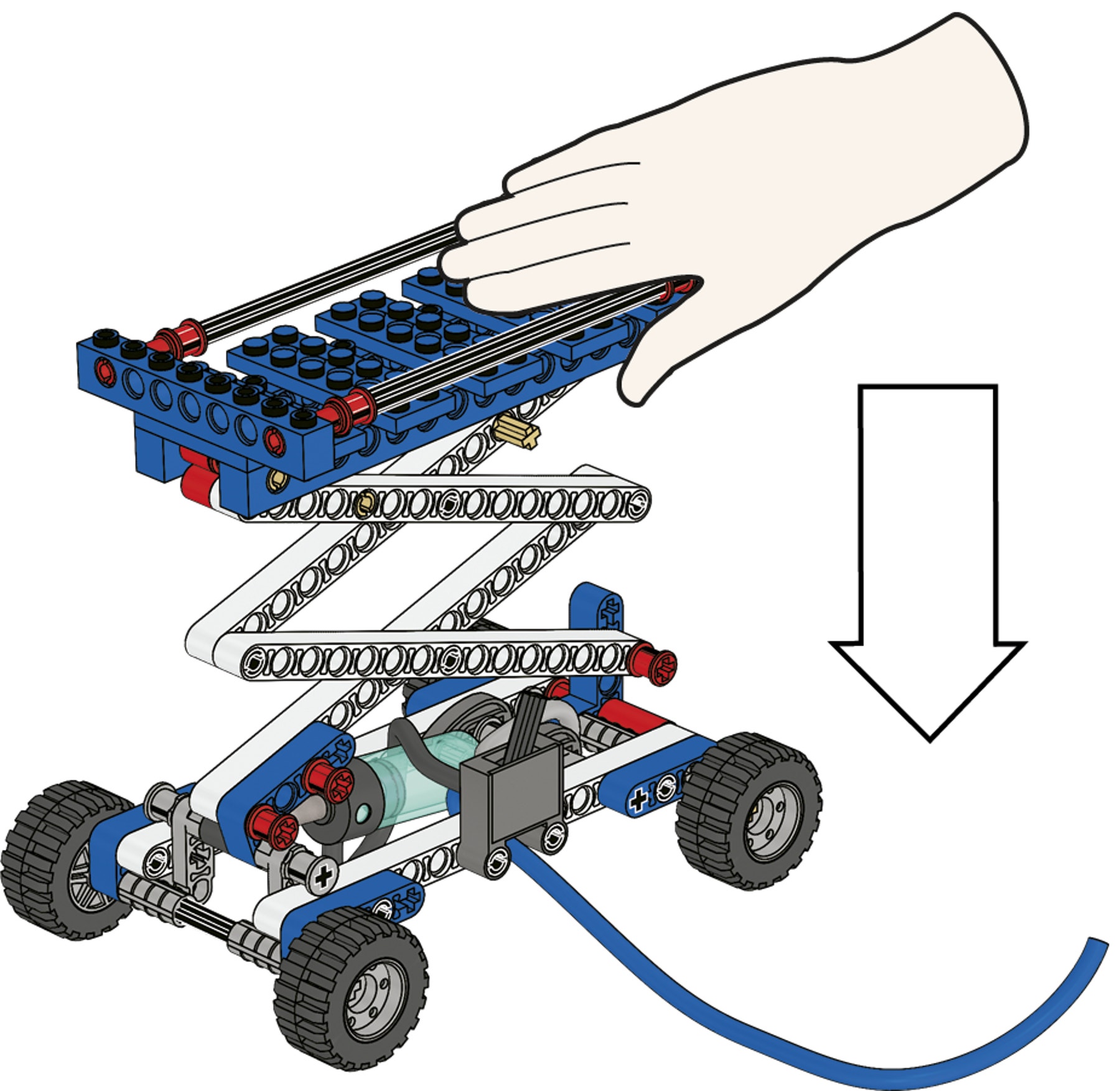
When you let go, the platform should bounce back up again. If not, check for air leaks.
The lower the Scissor lift and empty the air tank.
Hint
The easiest way to empty the air tank is to disconnect the tube going from the air tank to the valve.
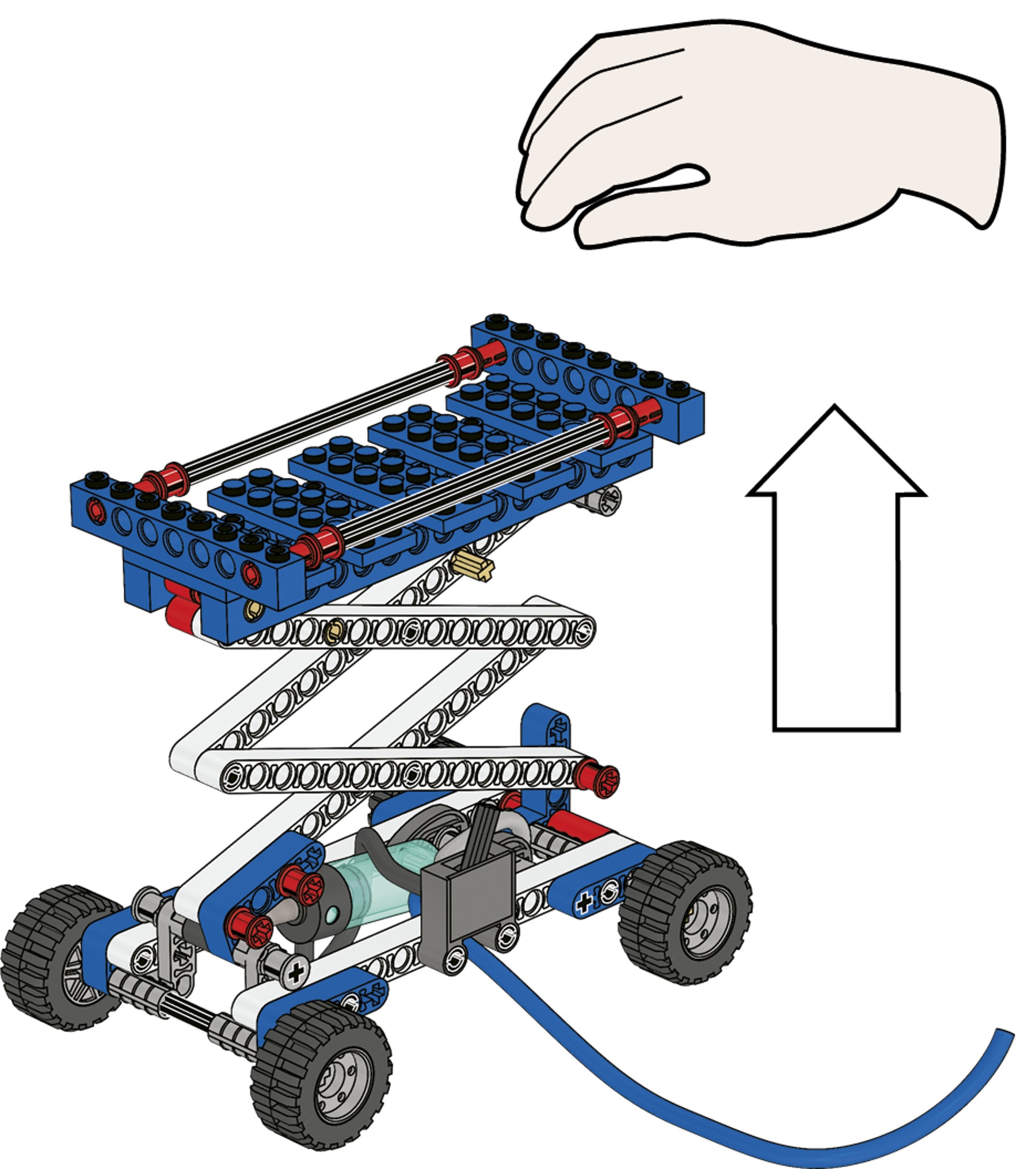
Contemplate
(20-25 minutes)
Going Up?
Find out what influence weight and height have on the number of pumps needed to raise the Scissor Lift to its maximum height.
First, predict how many pumps are needed to raise Scissor Lift A to its maximum height. Record your predictions on the worksheet.
Then, test how many pumps are needed. Record your findings on the worksheet.
Next, follow the same procedure for Scissor Lifts B, C and D. Test several times to make sure your results are consistent.
Scissor Lift A (page 11, step 15) needs about 12 pumps
Scissor Lift B (page 12, step 16) needs about 20 pumps
Scissor Lift C (page 17, step 21) needs about 17 pumps
Scissor Lift D (page 18, step 22) needs about 28 pumps

Have the students reflect on their investigations by asking questions such as:
• What did you predict would happen and why?
• How does the Scissor Lift work? It is a series of first class levers each squeezing the next one. The pivot points are the pegs in the centre of the beams.
• How did you make sure the tests were fair? Did you empty the air tank?
Continue
(25-30 Minutes)
How much pressure is needed?
You know how many pumps are needed to raise the Scissor Lift to its maximum height. Now add the manometer and find out how much pressure is needed (page 20, step 24).
First, predict how much pressure is needed to raise Scissor Lift A to its maximum height. Record your prediction on the worksheet.
Then, test how much pressure is needed. Record your findings on the worksheet.
Next, follow the same procedure for Scissor Lifts B, C and D. Test several times to make sure your results are consistent.
Scissor Lift A (page 11, step 15) needs a pressure of about 1.0 bar
Scissor Lift B (page 12, step 16) needs a pressure of about 1.5 bars
Scissor Lift C (page 17, step 21) needs a pressure of about 1.4 bars
Scissor Lift D (page 18, step 22) needs a pressure of about 2.1 bars

Optional: Further investigations
Why does the pressure drop immediately after the Scissor Lift has reached its maximum height?
When the cylinder piston extends the total area for compressed air has increased.
The pressure adaptation the new total area results in a small pressure drop.
Teacher Support
Students will explore the concepts of:
Area
Behavior of gases under pressure
Forces
Assembling components
Control of mechanisms
Evaluating
Using mechanisms - levers
NGSS
Crosscutting Concepts
Cause and effect: Mechanism and explanation
Systems and system models
Structure and Function
Stability and change
Science and Engineering Practices
Ask questions and Defining Problems
Developing and using models
Planning and carrying out investigations
Analyzing and interpreting data
Constructing explanations and designing solutions
Obtaining, evaluating, and communicating information
Common Core Mathematics Standards
MP4 / MP5 / 7.RP.A
Common Core English Language Arts Standards
SL 6-8.1 / RST 6-8.3 / RST 6-8.4 / RST 6-8.7 / WHST 6-8.1 / WHST 6-8.2 / WHST 6-8.4 / WHST 6-8.7
Student Material
Share with:
 Google Classroom
Google Classroom